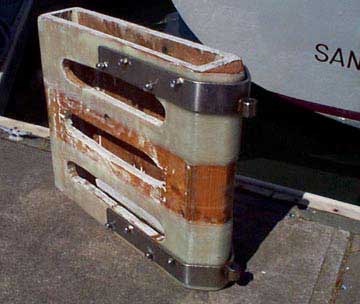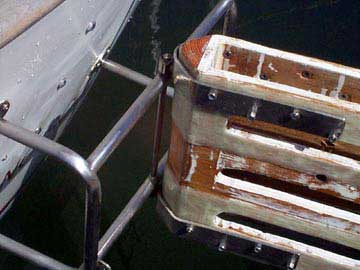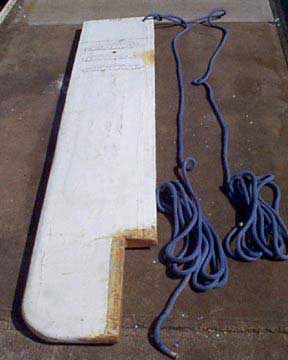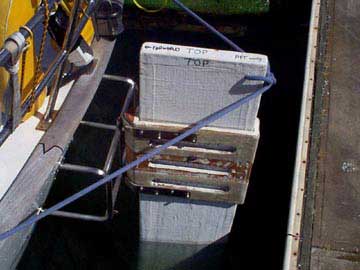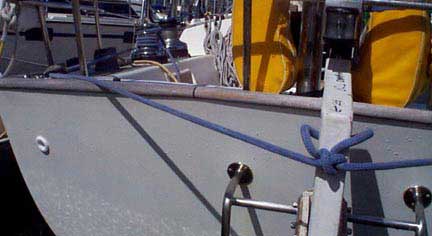
| An Emergency Rudder for a Passport 40
The cassette into which you slide the emergency rudder. The cassette is simply a plywood box, open on the top and bottom, "ported" for lightness(!), and reinforced with fiberglass. The rudder blade itself will slip though the cassette from the top to the bottom, then be pinned in place. The advantage of the cassette is that it can be mounted to the transom without having the rudder down in the water. If the blade is in the water jerking around, it can be difficult to get the pintles mounted to hold the system in place. Detail of the gudgeons on the cassette. Any outboard rudder system which uses pintles and gudgeons is inherently weak. Be sure your design tries to address the loads which will be placed on the system. This is the area which failed on version 1. The original gudgeons were fastened directly onto the white plywood piece at the front of the cassette, without the stainless tangs. They broke immediately.
The cassette mounted on the existing boarding ladder. In the case of "Trial Run," the cassette is mounted to the permanent part of the swim ladder, because "it's there." It is generally agreed that the swim ladder is not strong enough should the emergency system ever really be called into play, so some diagonal braces will be welded onto the ladder to beef it up. Well, it is an EMERGENCY rudder! This is a view of the emergency rudder viewed from the bottom of the "blade." The notch was installed to allow the rudder to fit a storage position on the boat. Notice that the blade is not terribly refined, and that is ok. There is only so much time you can spend on something which hopefully you will never use! The two blue sheets are steering lines, used to turn the rudder. The rudder mounted in the cassette. Here you see the emergency rudder slipped into the cassette and pinned in place. It is steered using the lines led off to the port and starboard corners of the cockpit. The steering lines leading forward. Looking up the port side of the boat, you can see the steering line leading from the rudder to a block on the transom, then forward to a winch. The attachment of the line to the head of the rudder is too loose, and will not work correctly as it is shown here. A tighter knot, which will eliminate slippage of the line would be a big improvement. |
Copyright ©2011 Pineapple Sails
2526 Blanding Avenue
Alameda, CA 94501 USA - directions
(510) 522-2200
